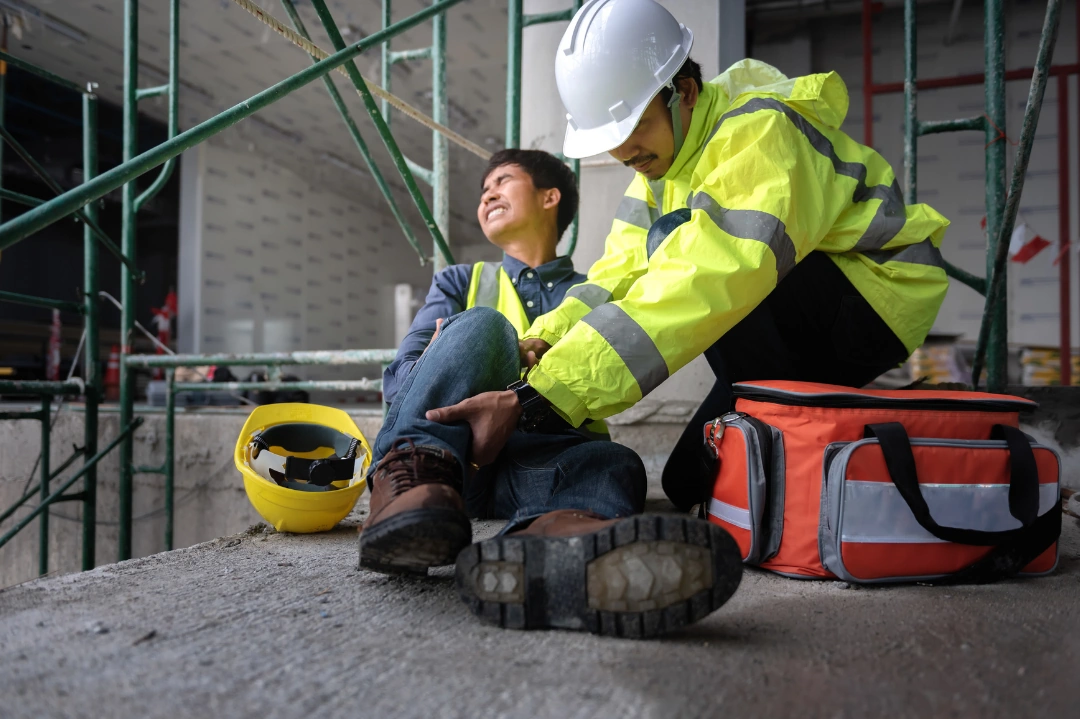
The Role Of A QHSE Manager
Employees often work alone in fields such as construction, utilities, transportation, and remote operations, where immediate assistance isn't readily available. Managing the health, safety, and environmental aspects of these roles requires careful oversight. A QHSE Manager—responsible for Quality, Health, Safety, and Environment—develops systems that address the unique demands of lone work. These efforts help organizations maintain compliance and reduce incidents through structured planning and practical safeguards.
For employers, understanding QHSE functions creates opportunities to support operational continuity and worker well-being.
The Importance Of Lone Worker Safety
Working in isolation presents challenges not typically faced in group settings. Lone workers have limited access to immediate help, making them more exposed to risk. Slips, falls, equipment failure, or health emergencies can escalate quickly without someone nearby to respond.
QHSE Managers respond to these circumstances by creating targeted strategies that address the realities of working alone. They assess the context of each role, evaluate possible hazards, and implement preventive measures to reduce exposure. This protective framework includes communication tools, clear emergency procedures, and access to proper equipment. These measures create safer conditions for lone workers, allowing them to perform their roles with greater confidence and fewer disruptions.
Key Responsibilities Of A QHSE Manager
The QHSE Manager oversees safety programs explicitly designed for employees working in isolation. These programs account for location, job function, environmental hazards, and communication needs. Responsibilities include:
- ●
Establishing Communication Protocols - Scheduled check-ins, escalation procedures, and real-time monitoring systems ensure ongoing contact.
- ●
Emergency Response Planning - QHSE Managers equip workers to respond effectively when waiting for external assistance.
- ●
Remote Monitoring Tools - GPS tracking, panic alerts, and wearable devices help supervisors track worker status and act quickly if needed.
QHSE Managers build these safety systems using data, field insights, and regulatory expectations. QHSE Managers close the gap between planning and execution by aligning procedures with actual working conditions.
Implementing Effective Safety Protocols
Safety protocols for lone workers differ significantly from general workplace rules. A QHSE Manager builds procedures that match the realities of remote or unsupervised work. Common elements include:
- ●
Scheduled Check-Ins - Timed communications that confirm a worker's status throughout a shift.
- ●
Emergency Alerts - - Devices or apps that allow workers to request help instantly.
- ●
Environment-Specific PPE - Gear selected for the conditions of each task or location.
These measures are informed by risk assessments and refined through collaboration with team members and operational leads. The goal is to create practical and relevant solutions to daily workflows.
As industry tools and standards evolve, QHSE Managers adjust safety protocols to keep pace. Updates may include incorporating automation, improving data collection methods, or refining emergency workflows. These changes support a safer, more responsive system that reflects current needs.
Risk Assessment And Hazard Identification
Before implementing any control measures, the QHSE Manager conducts detailed risk assessments. These reviews explore physical environments, job tasks, isolation levels, and equipment use to identify sources of potential harm. For lone workers, this might include unstable terrain, extended time on the road, or solo operation of machinery.
To identify hazards, QHSE Managers combine structured tools—such as checklists and inspections—with worker feedback and real-time data from monitoring technologies. Sensors can track temperature, gas levels, or inactivity, offering insights that may not be visible through observation alone.
These assessments are not static. As work conditions change, equipment is updated, or feedback is received, QHSE Managers revisit and revise the evaluations. This adaptive approach allows the organization to avoid emerging risks and adjust safety strategies accordingly.
Training And Communication
Training equips lone workers to act independently in situations that may escalate quickly without support. QHSE Managers design learning programs that cover:
- ●
Identifying risks in their environment
- ●
Using emergency tools and communication devices
- ●
Responding effectively to unexpected incidents
Training methods often include hands-on practice, scenario-based drills, and digital learning modules, allowing on-demand access. These sessions aim to prepare workers to act clearly and confidently when alone.
Alongside training, communication plays a key role in ongoing support. Regular updates, mobile reporting apps, and wearable tech help maintain a link between workers and supervisors. Workers can promptly report issues and request assistance using these tools even in remote locations.
Technology strengthens both areas. Real-time tracking, automated alerts, and two-way communication devices ensure that QHSE systems remain active throughout the workday, even in unpredictable environments.
Compliance With Regulations And Standards
Organizations must operate within a framework of health, safety, and environmental standards. QHSE Managers are responsible for aligning lone worker practices with national laws, local regulations, and industry certifications such as ISO 45001. This includes:
- ●
Reviewing applicable laws and updates
- ●
Auditing current safety procedures
- ●
Updating documentation and policies
- ●
Ensuring employee understanding of required protocols
These efforts help avoid regulatory issues and demonstrate due diligence. More importantly, they contribute to building workplace habits that reduce injuries and reinforce consistent safety behaviors.
Monitoring And Reporting
Monitoring allows QHSE Managers to track the effectiveness of safety measures in real-world conditions. This includes data collection from incident reports, wearable sensors, and digital monitoring platforms. Insights from this data help identify patterns, potential blind spots, or lapses in safety behaviors.
Regular reporting turns these observations into actionable improvements. By sharing findings with supervisors, executives, and workers, QHSE Managers promote transparency and involve others in shaping safer operations.
This feedback loop supports a culture where safety evolves based on lived experience, not just regulatory pressure. Continuous monitoring ensures that safety programs remain grounded in the realities that lone workers face daily.
Conclusion
QHSE Managers play a strategic role in shaping safe, compliant environments for lone workers. Through focused risk assessments, tailored protocols, and informed use of technology, they build systems that support workers who operate without direct supervision. Their actions help reduce incidents, maintain regulatory alignment, and encourage a shared commitment to safety across the organization.
Employers prioritizing QHSE-led initiatives create conditions where lone workers can thrive, supported by systems designed with their unique needs in mind. Ongoing refinement, open communication, and data-driven planning lay the groundwork for safer, more resilient operations.
Read More From the Lone Worker Blog
How To Send A Check-In Message To Your Lone Workers

Effective communication is a critical component of any workplace safety strategy, especially when it comes to lone workers.
Read MoreWork Accidents: Prevention And Response

Ensuring the safety of lone workers is one of the biggest responsibilities for employers. These workers face unique risks, making understanding and mitigating the potential for work accidents essential.
Read More


